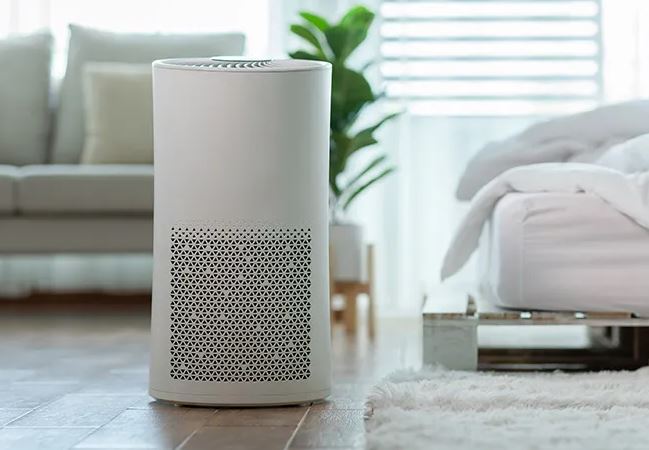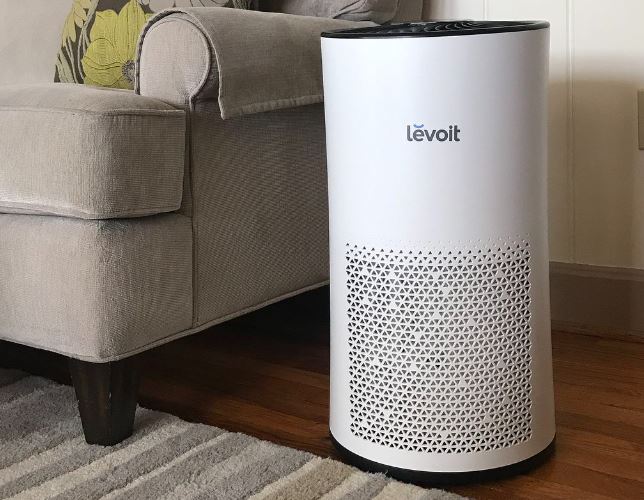Air Purifiers for Mold: Preventing Spores and Protecting Your Home
Air Purifiers for Mold: Preventing Spores and Protecting Your Home
Blog Article
In a health-conscious world, the quality of the air we breathe has become an increasingly important consideration for individuals across the globe. With rising pollution levels and a deeper insight of the influence of indoor air quality on overall health on our health, it's no surprise that the air purifier market is booming.
Air purifiers are appliances that clean the air of pollutants in a given area, promoting healthier indoor air. They are ideal for individuals suffering from allergies, asthma, and respiratory conditions as they can drastically decrease the amount of allergens, pollutants, and irritants in the air. Healthy individuals, too can rely on the added protection of air purifiers, as they offer peace of mind and an extra layer of protection against airborne illnesses.
This article will delve into the fascinating realm of air purifiers, discussing the perks they offer, the array of models available, crucial aspects to think about when selecting the right model, and optimizing your purifier's performance. By the end, you should have a comprehensive understanding of air purifiers and be able to make an informed decision about whether investing in one is the smart move for your household.

Understanding Air Pollutants and Their Impact on Health
To understand why air purifiers are essential, it's vital to understand the kinds of pollutants they target and the likely impact of contact with these pollutants.
Indoor air pollutants can be broadly grouped into three main types:
- Particulate Matter: This includes solid particles and liquid droplets suspended in the air. Examples include smoke, dust, pollen, pet dander, and mold spores. Particulate matter can cause respiratory issues and trigger allergic reactions.
- Volatile Organic Compounds (VOCs): VOCs are gases emitted from various solids or liquids. Sources of VOCs include cleaning agents, paints, aerosol sprays, pesticides, and similar products. Exposure to VOCs can lead to irritation of the eyes, nose, and throat, as well as headaches and nausea.
- Biological Hazards: These include bacteria, viruses, mold, and mildew. They can cause a range of health issues, from allergy symptoms to more serious health risks.
The impact of these contaminants on human health can differ considerably. For individuals with respiratory conditions or compromised immune systems, exposure to indoor air pollutants can lead to significant health complications. For those in good health, long-term exposure to certain pollutants can contribute to the development of respiratory issues and other health problems over time.

The Science Behind Air Purifiers
Air purifiers use a variety of physical and chemical processes to trap and eliminate airborne pollutants. Understanding the underlying principles employed by purifiers will help you grasp how they work and the array of models on the market.
Here are the core processes and cutting-edge technologies used in air purifiers:
- The Power of Mechanical Filtration: This is the predominant technique used in air purifiers. It involves using specialized filters to capture particles as air is drawn into the purifier. The filters can be made from various materials, each designed to capture specific types of particles. For example:
- Pre-filters: The First Line of Defense: These are usually the initial barrier, trapping bigger contaminants like hair and dust.
- HEPA (High-Efficiency Particulate Air) filters: HEPA filters are remarkably proficient at capturing microscopic particles, including pollen, dust mites, and some bacteria and viruses. To be labeled a bona fide HEPA filter, it must effectively capture particles as small as 0.3 microns, with a minimum efficiency of 99.97%.
- carbon filtration: These filters are designed to adsorb odors, VOCs, and gaseous pollutants.
- Ionizers: Charging Ahead: Ionizers use electrical charges to create an abundance of negative ions, which latch onto airborne particles. The charged particles then stick to nearby surfaces or are attracted back to the purifier.
- Ozone's Double-Edged Sword: Some air purifiers use ozone, a powerful oxidant, to break down pollutants. While effective, ozone is a respiratory irritant so these types of purifiers should be used with care and only when no one is present.
- UV Light: Shining a Light on Purification: UV light can be used to effectively eliminate bacteria, viruses, and mold. UV light is often used in combination with a filter to trap particles, and UV light provides an extra layer of protection against biological hazards.
Selecting the Perfect Purifier
With a variety of choices available, selecting the ideal air purification system can be a daunting task. It's important to consider a range of criteria to ensure you make the best decision for your particular needs and room size.
Here are some crucial points to consider:
- Room Size: Air purifiers are typically rated for specific room sizes, so it's important to choose a model that can adequately cater to the room size. Most purifiers will list a suggested room size or CADR rating, which indicates the rate at which it can deliver clean air.
- Understanding Contaminants: Identify the types of pollutants you want to target. If you suffer from allergies, look for a purifier with a HEPA filter. For reducing unwanted smells, consider a model with a activated carbon filter. If you're concerned about bacteria and viruses, a purifier with UV light disinfection might be best.
- Whisper-quiet Performance: Air purifiers can produce a range of noise outputs, so if you plan to use it in a serene environment, look for models with a quiet mode for undisturbed rest.
- Maintaining Performance: Consider the long-term expenses and upkeep of the purifier. HEPA filtration systems may need periodic replacement, depending on use and environmental factors. Include filter replacement costs in your calculations when making your choice.
- Smart Innovations: Many purifiers offer smart features like air quality sensors, automatic modes, and Wi-Fi connectivity, allowing remote control and monitoring. These features can make your purifier more user-friendly and efficient.
Optimizing Performance of Your Air Purifier
Once you've chosen and set up your air purifier, there are several things you can do to ensure it operates at maximum efficiency and delivers the greatest advantages:
- Place it in the Right Location: Position your purifier in an central location, free from obstacles, to ensure efficient air circulation. Avoid placing it near windows or doors as drafts can impact its efficiency.
- Keep it Running: For the best results, it's recommended to run your purifier regularly. Many models have energy-saving features or smart modes that respond to air quality changes, so you can maintain fresh air without excessive energy costs.
- Regular Filter Care: Regularly follow the manufacturer's filter replacement guidelines. Over time, filters become clogged with particles, reducing the purifier's efficiency. Schedule filter replacements so you don't forget.
- Minimize Indoor Pollutants: Alongside using an air purifier, take steps to limit indoor contaminants. This could include frequent dusting and vacuuming, opting for natural cleaning solutions, and reducing chemical or aerosol usage. Report this page